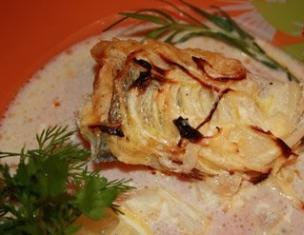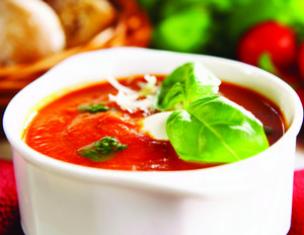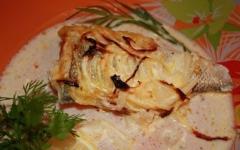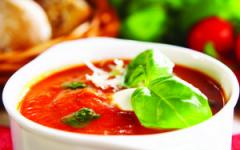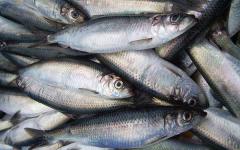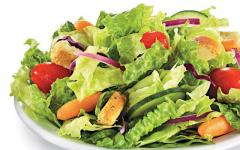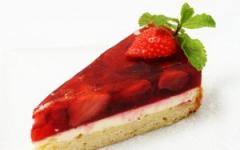For foreigners, Spanish paella is one of the symbols of this country, the same as flamenco or bullfight. If it comes to the cuisine of Spain, then, probably, this dish will come to mind first. But this is an outsider's view. And how do the Spaniards themselves treat the paella? Just like the Italians - to the pasta: there are many fine dishes, and there is paella. And this is serious. The Spaniards are ready to argue until hoarse about new recipes and ways of cooking this dish and lament that paella is "depersonalized", spreading around the world. Frozen semi-finished product for microwave? This is absolutely impossible! Paelu is considered a national treasure, which must be carefully stored ...
In each country there is a dish that unites its people. Or, as often, divides them. In Spain this dish is paella. Ask us to talk about our paels or arros, as they are often called, and you can feel that there are more paella recipes than there are stars in the sky. And to a certain extent you would be right - combinations of products that can make up a paella are endless. But the best paella is not just a product a good recipe, although this certainly helps. No, the paella's perfection arises when the person who prepares it has an almost tangible attachment to the dish itself, to the process of its creation and to the people who will eat it.

In fact, paella is not a dish at all, it's a whole group of dishes that unite rice, olive oil and saffron. And, of course, the way of cooking rice. It is generally accepted that there are over three hundred various recipes paella. In reality, they are much more - like every Russian housewife has a "secret" borscht recipe, got from her grandmother, and the Spanish macho (and paella is traditionally cooked by men) has its own culinary secret.
Paella is not difficult to do, but it's amazing how often it gets confused in restaurants. The most common violation is loading a frying pan with excessive ingredients. Because they suffer from the fatal error of many paells: their rice was strangled. Meat, seafood and vegetables justify their place in the pan as flavor sponsors for the only important ingredient of each paella: rice. Remember this fact, and you are well on your way.
The Great Paella rests on five pillars
You'll find out that you did it right when you and your friends push off the chicken, green beans, even artichokes, just to get another split of this terribly exciting rice. The rice should be the average grain. Spanish rice is round and short; It absorbs liquid well, and it remains relatively stable during cooking. These qualities make it ideal for paella, where rice grains absorb the odor from the liquid; The rice should be dry and separate when it's done, and not creamy, like a risotto.
And this dish is not Spanish at all! It - Valencian, and this is recognized even by the inhabitants of other regions. Arabs, who for many centuries owned the Iberian peninsula, instilled a culture of rice and rice cultivation among the local people. The climate of Valencia is best suited for the cultivation of rice, so paella and appeared right here.

C. but you will also have success with affordable rice medium size, sold by Goya. Arborio is an acceptable substitute; However, long-term rice is not. The real Paella paella is wide, round and shallow and has split sides. It has two looped handles and can be lowered slightly in the middle so that the oil can collect there for pre-frying. The shape of the pan, called paella or paella, helps ensure that rice is cooked in a thin layer. The key is to maximize the amount of rice that touches the bottom of the pan, because, as you will see, there is a taste here.
Of course, there are several different legends on this score. The legend "romantic" tells of a fisherman who wasted time waiting for his beloved - he mixed everything he had found in his kitchen and tucked it in rice. Beloved results of the culinary experiment is appreciated!

A good paella pan is made of a very thin conductive metal, usually smooth or enameled steel. For example, these beautiful heavy and expensive copper or stainless pans, which some stores sell like paella pans, are actually better suited for extinguishing than for making paella. And any pot that is sold with a lid is a self-styled impostor: with the exception of the last rest period, the paella is prepared uncovered. Unit frying pans can sometimes be found in Latin American or Latin American markets.
The legend "historical" tells how an important person came to Valencia (variants: the Roman emperor, the Spanish king, the bishop and so on - right up to Napoleon!) In order to show hospitality and to treat the visitor to the glory, the residents collected everything their supplies and prepared a new dish.
"Practical" legend claims that the paella was invented by Christian servants of the Moorish rulers, bringing home the remnants of master's feasts, or poor fishermen, connecting the remains of the catches with the rice.
Or order them from a Spanish table, in which there are frying pans in different sizes, along with a bomb rice and many other Spanish products. If you do not have a paella pan, the alternative is to use a frying pan. 13-inch or larger stainless steel or aluminum frying pan will work; Otherwise, use two middle staples that separate the ingredients between them. Avoid cast-iron pots and pans.
Try to find a source of heat that can hold the whole paella. Depending on the configuration of your burners, you need to saddle the pan for two burners or install it on the largest burner. In either case, you will need to move and rotate the pan to distribute heat. Or you can cook paella outdoors on a large gas or wood grill or even on a wood fire, as is done at the paella competitions in Spain.
The true time for the appearance of paella is unknown, but in Spanish culinary books it has been featured since the 18th century.
Today, paella can be ordered in almost every restaurant in Spain, but, unfortunately, tasty dish to find is not so simple - it is checked on own experience! The influx of multilingual tourists who decided to join the "real Spanish cuisine", led to the fact that the restaurant owners frankly began to trash. Alas, too often under the guise of paella you will be served a "poorly cooked pilaf", where the rice will either be too hard, or - like a porridge-gruff, the chicken will resemble a sole, and the mussel shells will be empty ...
The technique is simple: fry the vegetables over medium heat until they soften, and the flavors do not merge, and the water from the tomato evaporates. This mixture should be thick enough to keep its shape in a spoon. Aromatized liquid prepares rice, while at the same time giving it an additional character. If you do not have a home stock at hand, improvise one with the ingredients in the paella. For example, for paella with shrimp, boil the shells in salt water for a quick, tidy stock. If you use canned food, choose low-salt.
A few tips to avoid such disappointment.
Where and when to eat? A universal rule - do not order this dish in beach restaurants and close to popular tourist attractions! And certainly not worth taking paella in the "menu del dia" - you will bring the dish in a few minutes, which can only mean that they prepared it for a long time, but for you they just warmed up ... And generally the farther you get away from the tourist zone, the more chance to try an authentic paella. Be careful: in a traditional restaurant paella is never served for dinner - it's a day dish. And it's not customary to cook for one - so tasting the paella is better in the company. For many years, the traditional "paal day" in Spain was Thursday, when the dish was cooked throughout the local "public catering". Explain this in different ways. Someone says that everything has gone on since the weekend of Spanish maids was Thursday, so that day the family dined outside the house. And some believe that the fishermen leaving on Monday at sea, returned on Wednesday, and the next day the restaurants received a fresh catch.
Tradition aside, you are allowed to be creative
You can also use water, as do many home cooks in Spain. Almost every paella recipe requires that the liquid be filled with saffron, which contributes to the color, as well as the subtle background flavor of rice. These semantic differences do not interest me. After you are satisfied with the technique of making paella, you can develop your own recipe according to what is good and fresh in your market. The "Options" section is below. There are no restrictions on ingredients that can be used in paella.

And on Sunday, paella is usually cooked at home. Outdoors and on the open fire - for the whole family and friends, turning cooking and food into a real holiday. It is believed that the joint eating of paella rallies and brings together. Willingly I believe - do not quarrel for a tasty, lovingly prepared meal? It is best, of course, to try the paella just like this ... On big holidays, this dish is prepared for the whole town - on giant frying pans, so that all will suffice. In the Valencian region, an essential part of the celebration of St. Joseph's Day (March 19th) is the preparation of a huge paella. And in 2001, at Madrid, we made a giant paella for 100,000 people!
Seafood, ham, vegetables, fruits, nuts - they all found their way into the paella. Here are some combinations that give the rice a wonderful flavor. Seafood paella. The funeral washed the shellfish or mussels in the broth, while the rice is cooking. Serve with alioli: smash garlic and salt on the pasta in a mortar and add olive oil and lemon juice to taste. Vegetable paella. Add the fried rice with rice. Sausage and chickpeas paella. Try using sausage chorizo, red pepper, whole garlic head and cooked peas.
Step by step: pre-pruning
If you want to simplify cleaning, saute all the ingredients consistently in a paella pan, but if you want to rush, you can use several pans at the same time. Start with chicken until golden brown. The head of garlic also enters the pan. A foil bag on a saucepan in the background contains saffron threads, which are roasted by the heat of the boiling material.

How and with what to eat?
The simplest answer to this question is with pleasure (if paella is good, of course)! However, there are some subtleties that I want to talk about.
There are two ways of feeding paella - traditional and modern.
According to the classics, the paella is eaten directly from the frying pan, all together - each of its "sector". Traditionally, wooden spoons, because (according to culinary purists), metal appliances spoil the taste. But these days, as a rule, serve both plates and cutlery. Unclean mussels and shrimps are usually laid aside on the edge of plates or frying pans, and at the end they are eaten by hands. It is also permissible to separate the chicken and meat from the bones by hand. There is also a "lazy paella" (for lazy eaters, not cooks), where all seafood is pre-cleaned. Another rule is to finish the "burnt" rice crust (it is called "sokorrat") at the bottom of the pan. Leave her - offend the chef and do not appreciate the dish!
The head of garlic remains in the pan. Connect the green beans and artichokes together until the pepper cools. Add the rice to the pan and saute for a minute or two until translucent. Adding a liquid. When you add the stock to a frying pan, it should boil briskly for the first few minutes until the rice peeps above the surface. Then you lower the fire so that the liquid gently boils. During this time, move the pan around as much as you want to wipe the heat, but do not mix the rice.
General principles of cooking paella
If the liquid seems to be boiling too fast, you may need to add a little more, so prepare a little hot water or more stock on another burner. Measurement of dignity. This will take about 20 minutes. Getting co-authors. This is a prize in a well-made paella.
Drink paella is taken with dry wine, depending on the type of dish, it can be white, red and pink. But not sangria! In the "right" restaurants, where paella is prepared, sangria is not even in the menu!
Which paella to choose? This is probably the most difficult question ... As I said, there are many kinds of this dish.
To get some, increase the heat at the end of cooking, paying close attention to the sound of rice and the smell. Period of rest. Cover the pan with a clean towel or foil and let it rest from heat for five to ten minutes. Service. Traditionally, paella is eaten directly from the pan. Everyone finds a place around the pan and begins to eat around the perimeter of the pan and heads towards the center. If this general style does not appeal to you, let people lie paella on their plates.
As a preface to paella, I like to offer a mixture of fried onions, tomatoes and peppers, called escaliboda, on toasted bread. To accompany rice, you need nothing more than lemon wedges, lightly dressed salad, wine and lots of family and friends.
The meat paella (paella de carne) can include chicken, duck, rabbit, pork, jamon and even hot sausage chorizo and sausages. Bovine and lamb in the paella personally I have not met, but I can quite assume that somewhere and these types of meat use. Sometimes you add a hard-boiled egg. Prepare a paella like on water, and on broth.
Cover the lid and bring to a boil, then reduce to a boil for 15 minutes, stirring regularly outside from inside and out and adding a splash of water if necessary. Put in the peas and shrimp, replace the lid, and cook for another 5 minutes, or until you reach the end. Mark to perfection, then slice the parsley leaves, scatter them over the paella and serve with lemon wedges on the side for squeezing. Peel and finely slice the garlic, peel and roughly cut the onions and carrots. . My advice here is simple - tasty, as this dish, if you feel a little flush, adding six mussels, six shellfish and any additional pieces of fish that you can afford will only make it even more festive.

Paella with seafood (paella marinera or paella de marisco) consists of shrimps and squid of different sizes, octopuses, cuttlefish, mussels and other shells. There are also exquisite lobsters, lobsters, crabs. In the Valencian paella ( paella valenciana) lay snails. Often seafood is combined with fish of different species, there are also purely fish varieties - paella de pescado. Prepare these types of paella can be on water, fish broth and white dry wine. A special kind of paella is called "black rice" (arroz negro) - it is prepared with cuttlefish, whose ink and color the dish.
It is a world-famous dish that originated in the Valencia region, in the east of Spain. Currently, it is widely used in all the provinces of Spain, as well as on all continents of the world. Like many other popular recipes, there was originally a peasant dish.
National Spanish dish
Today there are so many versions, as there are cooks - from and to mixed paella. Regardless of the kind that you are cooking, an indisputable fact is that rice is the key to creating a great paella. In the end, paella is, in fact, a dish of rice, and you want to choose the best variety.

The choice of vegetables for paella is very wide - you can use bell pepper, zucchini, artichokes, green beans, beans, carrots, green pea, olives and even mushrooms. Tomatoes are a must! But about the onions and garlic the arguments do not abate - there are both zealous supporters of the use of these vegetables, and hot opponents ... Vegetables in various combinations can enter into any kind of paella, but there are also purely vegetarian dishes ( paella de verduras or paella vegetariana). Of the spices and seasonings required salt (preferably a large sea) and saffron (only natural!) - about the stamen for a portion. Often the paella is served with ground paprika and rosemary. And a ready-made dish is served with a lemon.
The cultivation of rice gradually spread throughout the centuries to India, then to Greece, as well as around the Mediterranean and North Africa. When the Moors arrived in Spain in the 8th century, they brought with them many new products, including rice. They also brought technological advances, such as irrigation systems, that helped their kingdoms become productive agricultural areas. For centuries, the cuisine and culture of Valencia has evolved around rice.
Rice in Valencia has become so highly appreciated that two denominations of origin for rice grown in these areas have recently been ratified. The scientific name of rice is the ornament of sativa. Traditional varieties grown and eaten in Spain were short grains, almost round varieties, which are very suitable for classic Spanish dishes based on rice, such as paella. Traditional varieties of rice from Spain.

The most famous mixed paella (paella mixta), which is often offered to tourists. The most common combination is chicken and seafood with vegetables, although there are more exotic options. The main controversy about paella is precisely what and with what it is permissible to confuse. As elsewhere, there are "conservatives" who stand for traditional product combinations and "innovators" who stand for freedom of creativity. In general, this dish is a paradise for lovers of culinary experiments. There are so many variants of paella, that "real" or "right" simply does not exist! There is only a tasty and tasteless ... Come up with your paella - what could be more interesting?
Other varieties of rice suitable for paella
Bomb: The bomb, also called Valencia rice, is a short grain, almost round rice, with a pearl color. It absorbs three times its volume in water, unlike the average grain of rice, which absorbs only twice its volume. Another difference with the type of bomb is how it expands during the cooking process. Instead of cracking along with the length of the grain, it breaks open across and as it prepares, and it expands like an accordion until it reaches three times the length of the unprocessed grain. Senia and Bahia: Senia and Bahia, Like a bomb that also absorbs more than the average amount of liquid, and retains a texture aftertaste. These are the two most widely spread varieties of rice grown in Spain.
- This means that it absorbs more taste and does not stick together.
- For these reasons, rice bombs are highly valued by cooks.

So how to cook paella? Despite the scope for culinary fantasy, there are several rules that you need to follow, which paella you would not cook.
First of all, we choose dishes. We need a wide and shallow frying pan with two handles called paella or paella (the dish got its name from it, and not vice versa!) Its diameter varies from 20 cm to a meter. Since the layer of rice should not exceed two centimeters, the diameter is calculated by the number of eaters. The best are the cast iron paella, for the cleaning of which they never use detergents.


It is very important to make sure that the dish is heated evenly. I was amazed how serious the Spaniards are to this - even special gas burners are used, which are necessary to ensure that the flame is the same under the entire paella. If the dish is the highlight of the picnic program and cooked on open fire, then the fire is constantly monitored, and the wood is selected long and carefully. Ideal are dry grapevine and orange tree, but this is already at the level of gourmet beams ...


The most difficult thing in cooking paella - in time to catch the moment when the rice has reached the right consistency - soft enough, but not overcooked. During cooking (especially as long as there is no experience), it is necessary to increase the fire, then add water or broth, and at the very end it is necessary to make a very strong heating for a couple of minutes - to form the same "crust". And remember - do not mix paella! Before serving, the paella "with heat and heat" is left for a few minutes - so the rice will finally "come to the condition".
The best rice for paella is Valencia (there are many varieties - for example, bahia or bomba). But any round (not steamed and not flavored) which well absorbs a liquid is quite suitable. Rice for paella is not washed!

And now, when with general recommendations all is clear, let me offer you some recipes. I collected them for several years in different regions of Spain (recipes were given to me by neighbors, friends and even restaurateurs), translated tips from cookbooks and Spanish sites, tried, combined and processed ... After all, paella is creativity! As a result, something that ideally suited me and my household members turned out. All recipes are designed for 4-5 servings and a frying pan 40 cm in diameter. (In the Moscow kitchen, you have to cook on two smaller frying pans, which are similar to the diameter of hotplate burners).
Paella in Valencian style
- 1 small chicken (up to 1 kg)
- 0.5 kg of duck (better than the leg) or 0.5 kg of rabbit
- 15-20 pcs. snails (I took already boiled, but in seashells)
- 0.3 kg of rice
- 2-3 cloves of garlic
- 1 large tomato
- 0.3 kg of string beans
- 0.2 kg of white beans (pre-soaked or boiled)
- Saffron (grind 4-5 stamens), 1 tsp. ground paprika, salt to taste, rosemary
- Olive oil

Fry garlic in a large number olive oil, remove from paella. In the same oil until the golden crust fry the meat, chopped together with the bones into pieces 3-5 cm. Add green beans, white beans, fry. Add peeled and small-cut tomato, snails, salt, paprika, saffron and a sprig of rosemary. Pour water (approximately 1 liter) and simmer for 15-20 minutes. When the water evaporates by half, pull out the rosemary, cover the rice and evenly distribute it in a frying pan. Do not interfere! First 10 minutes cook on high heat, then reduce heat and cook for 7-10 minutes. When rice absorbs almost all the water, sharply increase the fire - literally for 1 minute. This is how the notorious crust is formed. Remove from heat, cover with a towel (Spaniards - honestly - use a newspaper) and let stand for 5 minutes. Serve with chopped quarts with lemon.
P.S. If someone is embarrassed by snails, then you can do without them!
Paella with seafood
For it you will need:
- Large shrimp -15-20 pieces. It is better to use uncleaned or at least with tails
- Squids - 2 medium
- Mussels (in seashells) - 15-20 pieces. If you use mussels without shells, then take them a little more
- Octopus -4-5 small or 2 medium
- Scallops - 0.2 kg
- 0.3 kg of rice
- 2-3 cloves of garlic
- 2 tomatoes
- Saffron (grind 4-5 stamens), 1 tsp. ground paprika, salt to taste
- 0.5 liters of dry white wine

The principle of preparation is almost the same as in the previous recipe. So just a few words about the order of the products. First fry the shrimps and scallops, remove from the frying pan. They will need to be returned to the dish at the very end of the cooking. The rest of the seafood is stewed with tomatoes and spices in white wine, then add water, bring it to a boil and fall asleep rice.
P.S. In the absence of fresh seafood, you can use frozen. The taste, of course, is different, but it turns out well - it's checked! Before preparing them, it is best to slowly defrost in a refrigerator, drain and drain. Seafood can be taken any and in any combination.
Before I go to the third recipe, let's have a little background. A dish called "arroz a banda" (something like "rice separately") I ordered in a tiny restaurant, with the owner of which made friends, only after long and persistent persuasion, and then - so as not to offend a good person. Well, what is the interest of empty rice when you can add a lot of great ingredients to it? !! So much I was not mistaken for a long time - the dish brought to me was not just tasty ... It was a masterpiece! What I then cooked at home, using the kindly recipe given me, did not attract a masterpiece. But it was delicious. I hope that next time it will work out better - I will try. Try and you.
First of all, you need to weld a strong saturated broth from fish and seafood. You can use any sort of fish (bones, heads, tails and fins, too, go into business) and any "sea reptiles." In addition to salt, the broth is savored with rosemary, thyme, bay leaf and black pepper (peas). The broth needs to be filtered, but the remaining small pieces of fish or shrimp are completely acceptable.
For 500 grams of rice we need a liter of broth, a pair of garlic cloves, 1 onion, 2 tomatoes, olive oil and, of course, saffron.
Grind garlic in olive oil (this time we leave it in a paella!), Add the finely chopped onion and bring it to a golden color. Then we put mashed potatoes without tomatoes and saffron. Fill with broth, bring to a boil, fall asleep rice. Further - everything is the same as for any paella. Serve this rice with lemon and aioli sauce.

Paella - the most famous spanish dish. Virtually any products that, at least a little, combine with each other, can be included in the composition the original recipe: meat, beans, fish, spices, various vegetables and greens. The cook is given complete freedom in choosing the ingredients for this culinary miracle.
Pan for paella
How to cook a paella without a special frying pan with thick sides! It would be nice to buy a caldera - a large cast-iron frying pan with two handles and low sides. It is very convenient for cooking dishes for several people at once.
Rice for paella
The rice for Paella should not be boiled and should not be very loose. The most suitable varieties of rice for the paella "Senia" and "Bahia" - it will be difficult to find, so take a simple steamed rice or Iberica. Black Spanish rice is replaced by wild or Thai rice, because it is not an easy task to get cuttlefish to blacken the grains with the help of its ink. An important point in the preparation of paella is that rice does not need to be washed, nor is it recommended to mix its different varieties.
How to cook a paella with a classic recipe
- Separate the chicken legs, then chop the meat in half.
- Well, we will heat the caldera, and then pour four tablespoons of olive oil. Lightly fry the chicken.
- We take one, fairly large bulb and, finely crumble it. Add a few chopped garlic cloves, and fry it all together with the chicken for a few minutes.
- Now it is necessary to crumble several salted tomatoes, peeled.
- Then take two sweet peppers, and also crumble cubes. Add all this to our chicken. We continue to fry all together until the moment when the excess moisture evaporates.
- Add salt, pepper and a couple of spoons of ground paprika to taste.
- Now put in the caldera 200 gr. rice and fry for 3-5 minutes.
- We pour three cups of ready chicken broth. Next, continue to simmer the dish over low heat for half an hour.
- When the rice has already boiled well, and the broth has boiled out by this time, it's time to add more fire. We roast the whole dish until it forms an appetizing crust.
How to cook paella with seafood
Sea paella, the recipe of which includes rice with seafood, can be prepared with octopus, cuttlefish, mussels and Mediterranean shellfish, lobsters, shrimps. Do not forget about garlic, tomatoes, olive oil, sweet red pepper, fish broth and most importantly - saffron, it is he who gives the dish refined taste, a pleasant yellowish color and a delicate aroma.



